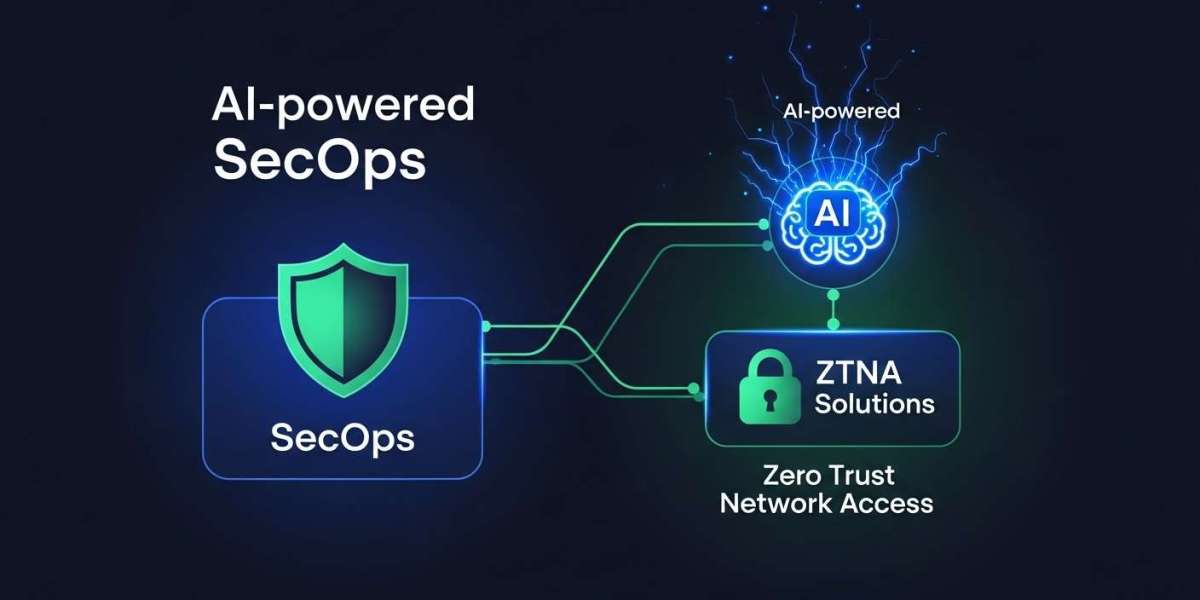Across industries, companies are turning to AI-powered SecOps and Zero Trust Network Access (ZTNA solutions) as a way to balance protection, agility, and compliance. By learning from real-world adoption, other organizations can better understand the benefits and challenges of these technologies.
The Shift to AI-powered SecOps
Why Traditional SecOps Was Struggling
Traditional SecOps relied heavily on manual analysis. Security teams often drowned in thousands of daily alerts, with many being false positives. The result? Slow response times and missed threats.
The AI Advantage
AI-powered SecOps changes this by:
Using machine learning to identify unusual patterns.
Automating repetitive investigations.
Delivering predictive analytics for faster response.
This isn’t just theory—it’s happening across industries right now.
Case Study 1: Financial Services Company Adopts AI-powered SecOps
A global bank faced overwhelming security alerts, averaging 10,000 per day. Human analysts could only process a fraction. By deploying an AI-powered SecOps platform, the bank achieved:
80% reduction in false positives.
Faster detection of insider threats.
Automated containment of compromised accounts.
The shift freed up analysts to focus on strategic threat hunting instead of endless firefighting.
The Role of Zero Trust Network Access
ZTNA at a Glance
Zero Trust Network Access (ZTNA) operates under “never trust, always verify.” Users and devices must prove their identity and risk posture before every access request.
ZTNA vs. VPN in Practice
VPN: Grants broad access, risking lateral movement.
ZTNA: Provides app-specific, identity-based access.
ZTNA is particularly critical in industries like healthcare and retail, where sensitive customer data must be tightly controlled.
Case Study 2: Healthcare Provider Deploys ZTNA Solutions
A hospital network needed to secure remote doctors accessing patient records. VPNs were slow and exposed too much of the network. By adopting ZTNA solutions, they achieved:
Secure, role-based access to patient apps.
Faster login times for staff.
Compliance with HIPAA and data privacy laws.
When integrated with AI-powered SecOps, the system could also flag suspicious login attempts, like doctors accessing records outside their department.
The Power of Combining AI-powered SecOps with ZTNA
Case Study 3: Retail Chain Secures Remote Workforce
A large retailer with thousands of remote employees combined AI-powered SecOps and ZTNA. The results were striking:
Real-time monitoring of user sessions.
AI-driven anomaly detection for unusual purchase system logins.
Reduced attack surface by eliminating broad VPN access.
This integration created a layered defense, ensuring that even if credentials were stolen, AI and Zero Trust worked together to block suspicious activity.
Business Benefits Observed Across Industries
Stronger Cyber Resilience: Companies recover faster from attempted breaches.
Operational Efficiency: AI reduces the burden on stretched security teams.
Cost Savings: Automation and proactive defense cut remediation costs.
User Experience: Employees enjoy faster, simpler access without VPN headaches.
For leaders, this combination translates into both security and productivity gains.
Challenges Faced in Adoption
Real-world deployments highlight common roadblocks:
Integration with Legacy Systems: Old infrastructure doesn’t always play well with AI or Zero Trust.
Skills Gap: Teams need training to operate new platforms.
Data Privacy: AI requires large datasets, raising compliance questions.
Enterprises solved these by using phased rollouts, managed services, and cloud-native solutions.
Best Practices Learned from Case Studies
Start Small, Scale Fast – Pilot ZTNA in one department before full rollout.
Use AI Incrementally – Begin with alert triage automation, then expand.
Train Teams Continuously – Upskill staff on AI-powered workflows.
Measure Success – Track KPIs like mean time to detect (MTTD) and respond (MTTR).
These lessons ensure smooth adoption and maximize ROI.
FAQs on AI-powered SecOps and ZTNA
Q1. Can small organizations benefit from AI-powered SecOps?
Yes. Cloud-based AI platforms scale to fit smaller teams and budgets.
Q2. Is ZTNA only for remote workers?
No. ZTNA enhances on-site security by enforcing least-privilege access.
Q3. How do AI and ZTNA work together?
AI adds real-time intelligence to ZTNA policies, adapting to changing risks.
Q4. Are compliance requirements easier with these tools?
Yes. Automated monitoring and granular access controls simplify audits.
Q5. What industries benefit most?
Finance, healthcare, retail, and government—where sensitive data is at stake.
Q6. How fast can results be seen?
Enterprises often see reduced false positives and faster detection within weeks.
Conclusion
The stories are clear: organizations that adopt AI-powered SecOps and Zero Trust Network Access (ZTNA solutions) are more resilient, more efficient, and more future-ready.



